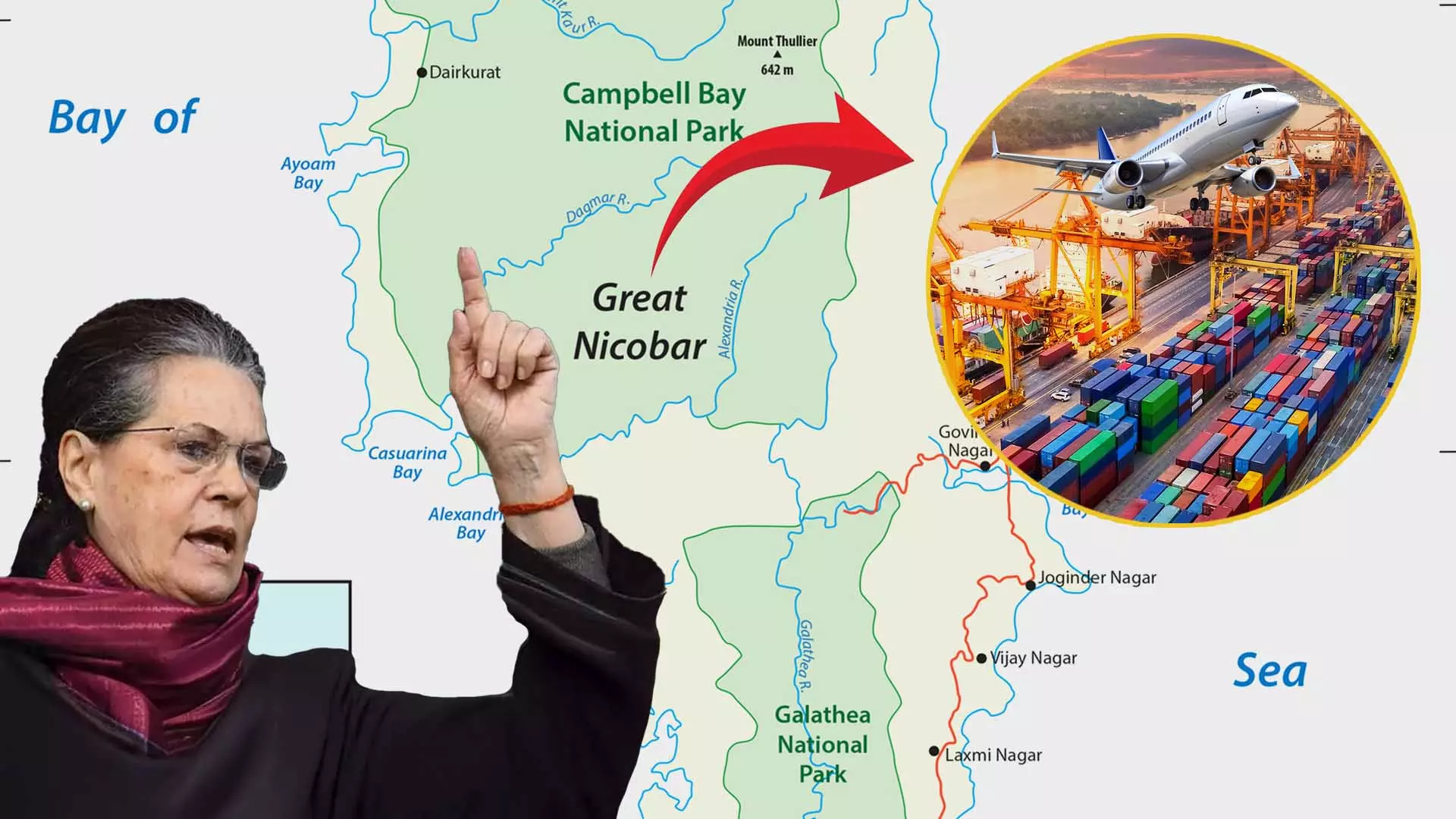
Great Nicobar project an 'ecological disaster': Sonia Gandhi slams Centre
From tribal rights to a million trees, ₹92,000-crore mega plan could spell devastation for Nicobar’s people and environment, says the Congress leader

India is planning to build a brand-new city in the middle of the Andaman Sea under the ₹92,000-crore Great Nicobar Project. While the government calls it a game-changing maritime leap, Congress leader Sonia Gandhi has described it as a “grave misadventure” and even an “ecological disaster.”
The project involves an international port, a greenfield airport, a 450 MVA power plant, and a modern township on Great Nicobar Island. But critics argue that the project is less of a dream and more of a nightmare — for tribes, wildlife, and the fragile ecosystem of the island.
Sonia Gandhi says the plan is not just about ports and airports but about “tribes, trees, turtles, and transparency,” warning that it could permanently damage one of the world’s last untouched biodiversity hotspots.
Tribes under threat
Great Nicobar is home to two ancient tribes. The Shompen, a hunter-gatherer community, have lived in the island’s forests for over 30,000 years, largely avoiding outside contact. The Great Nicobarese, who arrived around 10,000 years ago, are skilled mariners who live along the coasts.
Today, their combined population is just around 1,200, alongside 4,000 settlers. Official records claim these tribes agreed to give up land for the project. But critics allege that consent was manufactured through “fake gram sabhas” and proxy approvals, while the tribes were never truly consulted.
“For the Shompen, who want no interference, and for the Nicobarese, who have been asking to return to their traditional lands since the 2004 tsunami, this project could mean an existential threat,” Sonia warned.
Forests and wildlife at risk
The project requires diverting 130 sq km of pristine forest land, which amounts to nearly a million trees. Environmentalists warn this will destroy habitats of endangered species.
Galathea Bay, part of the project site, is a nesting ground for the rare Leatherback Turtle. The island is also home to the Nicobar Megapode, found nowhere else, along with rich coral reefs and the gentle dugong.
Yet, environmental assessments were rushed. Critics point out that turtle surveys were carried out in the off-season, while dugong studies relied on drones instead of proper field research.
Seismic danger zone
Adding to the concerns, Great Nicobar lies in a seismically active zone. The region was badly hit during the 2004 tsunami, raising questions about the safety of building a massive port and township in such a vulnerable area.
“Building a mega-port here could be a disaster waiting to happen,” critics warn.
Despite these objections, the project is moving ahead. Port bids are already in, tenders for the power plant have been issued, and the government claims to have “conservation plans” in place.
Future in question
A case against the project is currently pending before the Calcutta High Court. However, work on the ground continues. Supporters call it India’s chance to rival Singapore in maritime trade, while opponents insist it could go down in history as an ecological blunder.
Will the Great Nicobar Project become India’s grand maritime leap — or wipe out traditions, forests, and fragile ecosystems? Only time and politics will decide.
The content above has been transcribed from video using a fine-tuned AI model. To ensure accuracy, quality, and editorial integrity, we employ a Human-In-The-Loop (HITL) process. While AI assists in creating the initial draft, our experienced editorial team carefully reviews, edits, and refines the content before publication. At The Federal, we combine the efficiency of AI with the expertise of human editors to deliver reliable and insightful journalism.

